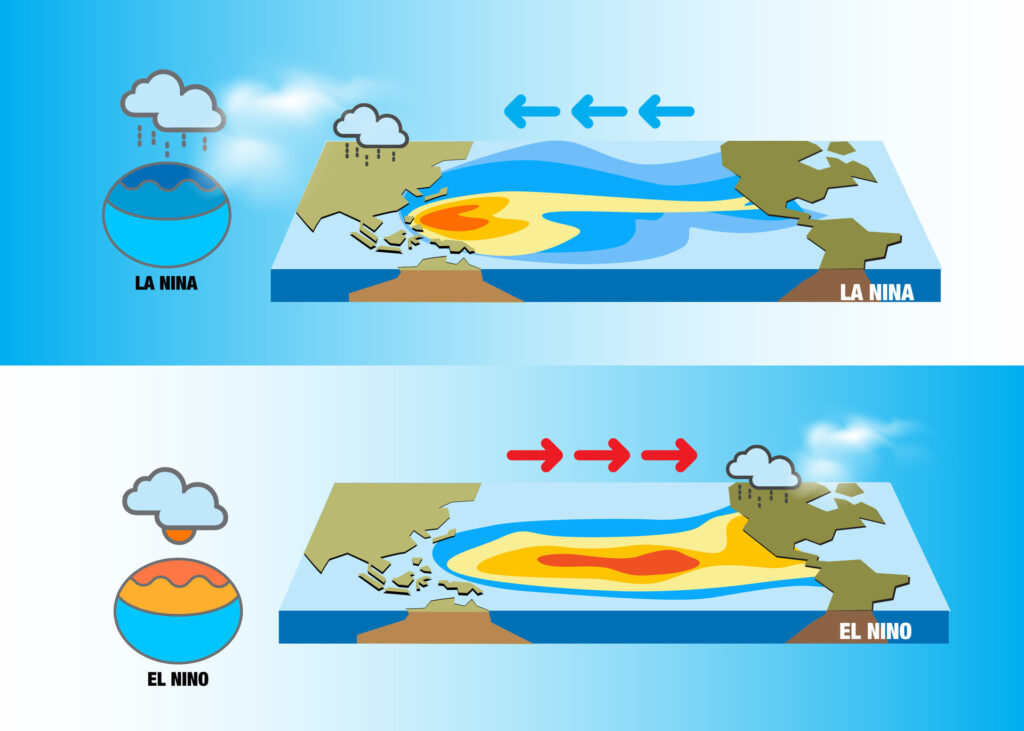
As the monsoon season nears its end, heavy rains continue to affect many states across the country. Amidst these weather patterns, a significant update regarding La Niña has emerged. The National Oceanic and Atmospheric Administration (NOAA) from the United States has released a new forecast about the onset of La Niña, which could potentially shape the weather in the upcoming months.
The Climate Prediction Center (CPC) of NOAA has issued a new projection indicating a strong likelihood that La Niña will become active between September and November of this year. According to the CPC, there is a 71% chance of La Niña developing during this period. However, the phenomenon is expected to be relatively weak. Despite this, the forecast suggests that La Niña could remain active through the early part of 2025, extending from January to March.
Initially, La Niña was expected to activate in August, which had led to predictions of increased rainfall during the monsoon season. However, the latest updates indicate that its influence will now begin between September and November. If La Niña becomes active as anticipated, it could lead to harsher winter conditions this year.
Dr. R.K. Singh, an agricultural meteorologist at GB Pant University of Agriculture and Technology, provided insights on this matter. According to Dr. Singh, recent analyses from the World Meteorological Organization (WMO) suggest that La Niña will become fully active by the end of this year and will remain influential until March or April of 2025.
La Niña’s impact is typically linked to increased rainfall. In India, this means heavier winter rains, as western disturbances are responsible for rainfall in northern and central parts of the country during this time. Meanwhile, southern India also receives winter rainfall, primarily due to the northeast monsoon. The intensified rains during the winter season are likely to result in lower temperatures, potentially causing extreme cold weather conditions.
The updated La Niña forecast has sparked discussions about its potential influence on temperatures and the 2025 monsoon season. Dr. R.K. Singh further elaborated on this, explaining that since La Niña is expected to remain active until April, temperatures in summer 2025 may be particularly high once the cold and wet season ends. This is due to the weather pattern’s cyclical nature, where increased rainfall and cooler temperatures in one phase are often followed by higher-than-average temperatures in the next.
However, there is no indication that El Niño—often associated with drought conditions—will emerge after La Niña concludes. This means that, as of now, the 2025 monsoon is expected to be normal. El Niño has historically led to droughts, as seen in 2023 when several states across India experienced dry conditions due to its presence.
The transition from the current monsoon season to La Niña is expected to bring significant changes to India’s weather patterns. While winter rains are likely to increase, bringing with them colder temperatures, the long-term outlook suggests hotter conditions as the cycle shifts in 2025.
The absence of an El Niño forecast, however, offers a glimmer of hope for a more stable monsoon season in 2025. Whether these projections hold will be closely watched by weather agencies and meteorologists in the coming months.






